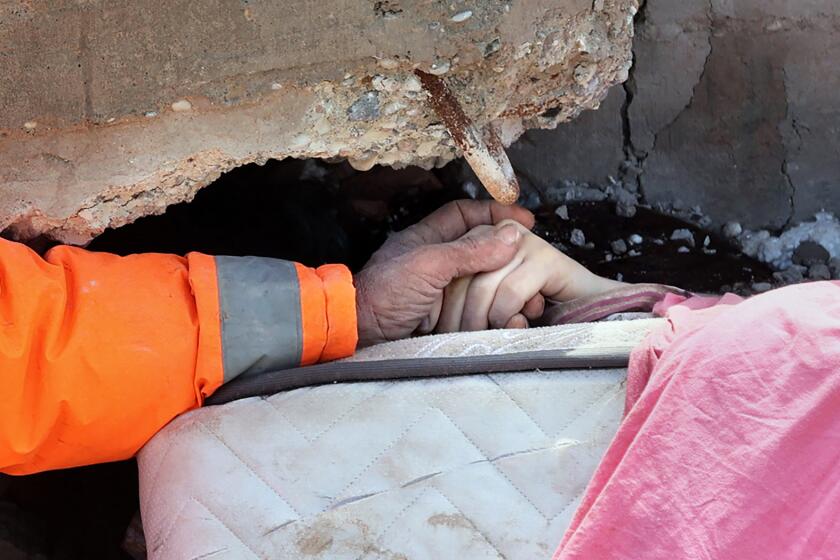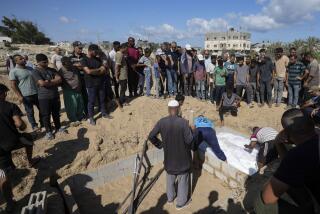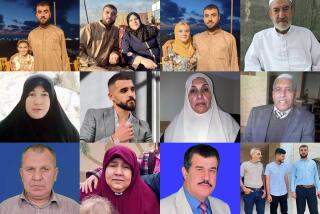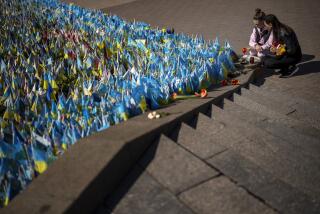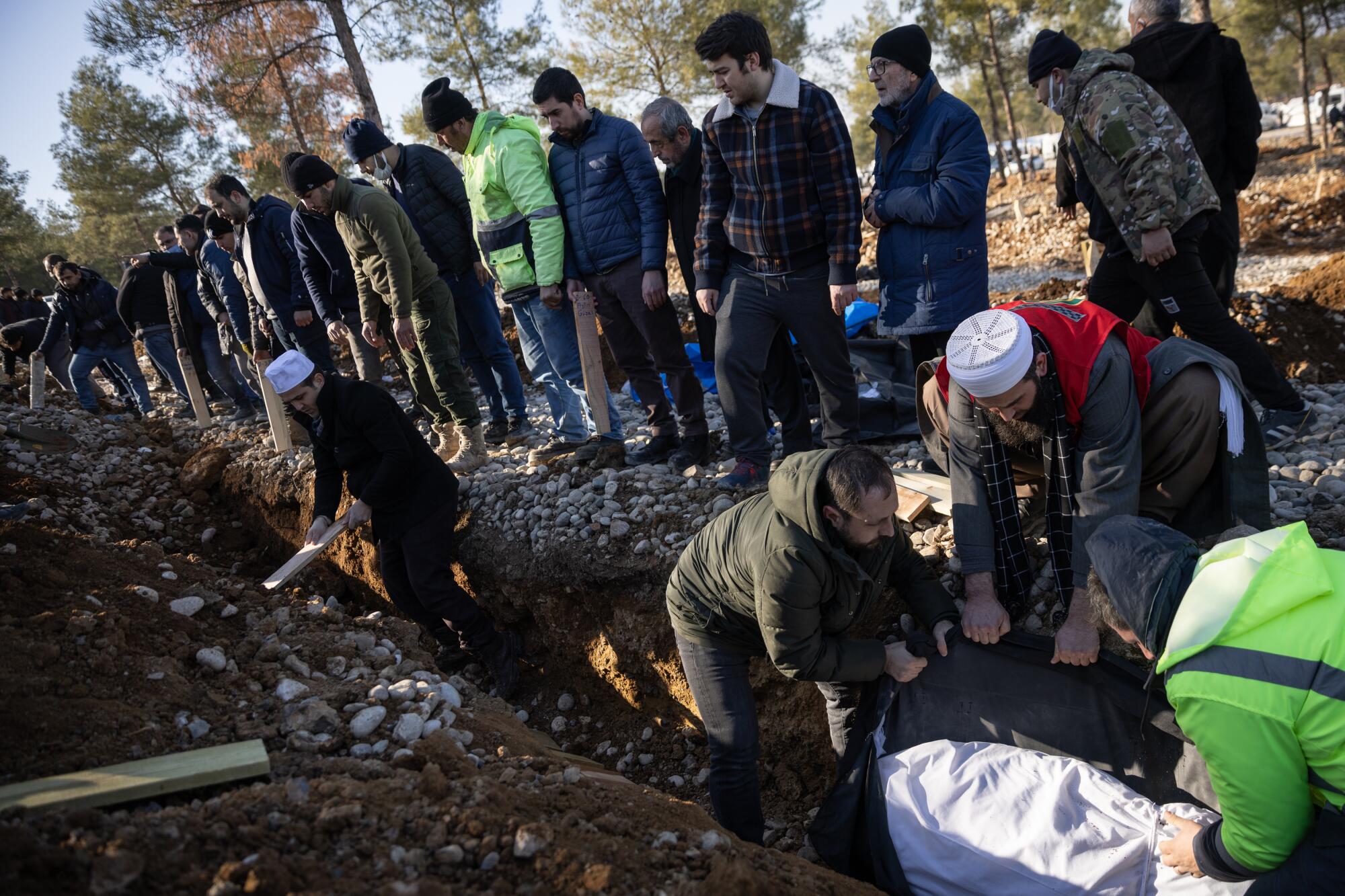
KAHRAMANMARAS, Turkey — There is an almost assembly-line quality to the burials in this southern Turkish city near the epicenter of one of the world’s deadliest natural disasters in years. The exigencies of mass death have left little other choice since Monday’s magnitude 7.8 earthquake transformed the area into a charnel house of mangled bodies and crushed masonry.
And so, with every day as the death count climbs higher — on Thursday, it leaped past the 20,000 threshold across southern Turkey and northern Syria — excavators lumber like ungainly beasts across the pine-forest cemetery on Kahramanmaras’ outskirts, scooping out 200-foot-long trenches to receive victims.
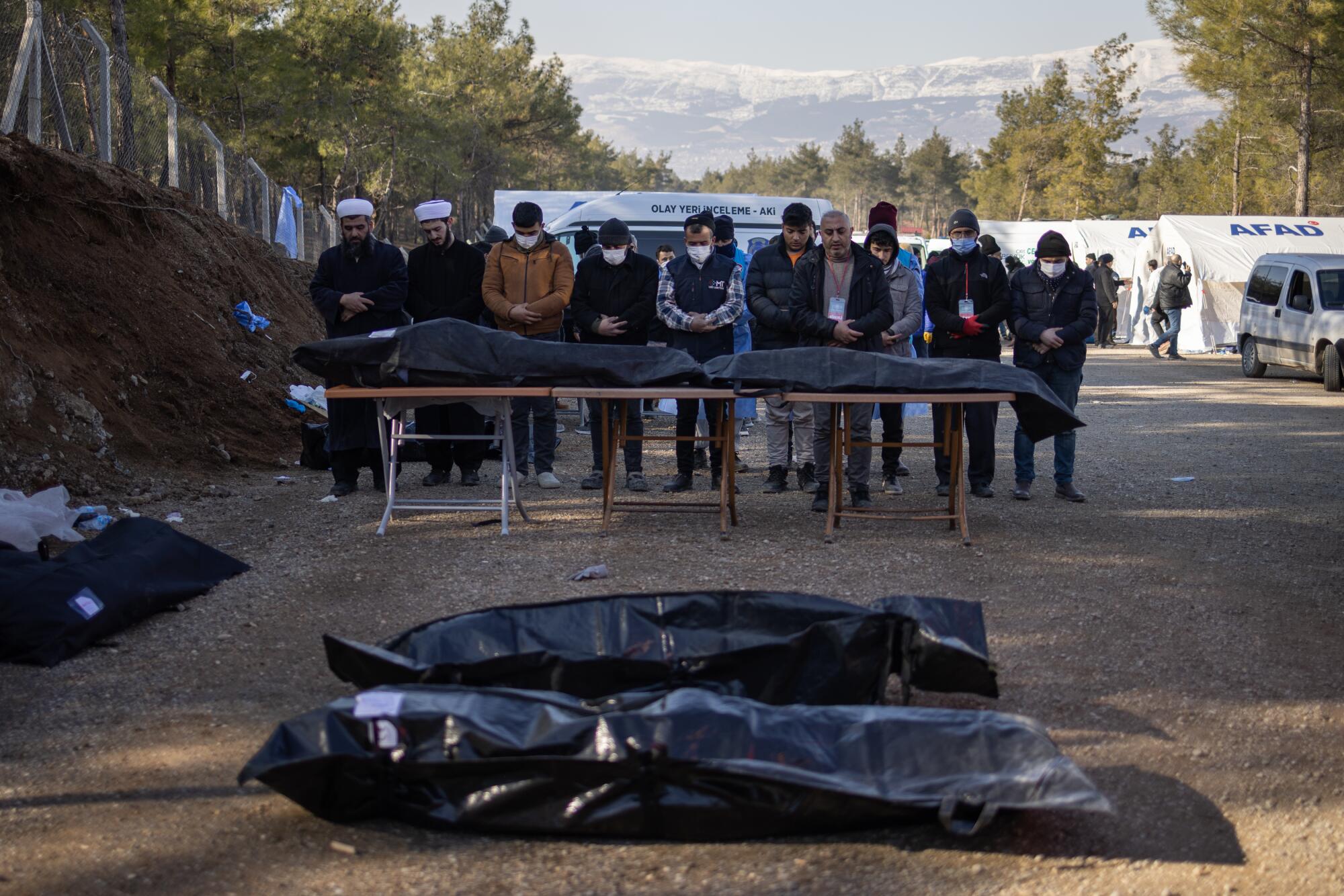
Every yard of trench was claimed on Thursday as soon as it was turned over. The digger would barely lift its bucket before survivors would appear, chanting “La ilaha illa Allah” (There is no god but God) as they lifted yet another body bag and heaved it into the fresh opening.
The death toll is in the thousands after a magnitude 7.8 earthquake, followed by a magnitude 7.5 quake, struck southern Turkey.
A harried-looking imam stood by the side, intoning a quick, half-minute-long collection of Koranic verses before briskly moving along the trench to the next grave in line, leaving family members to finish the grim work of constructing a canopy of wooden slats placed width-wise over the corpse.
Then the excavator covered the trench with earth; no headstone, but a piece of wood hewed from one of the nearby pines with a name and date scribbled with black marker.
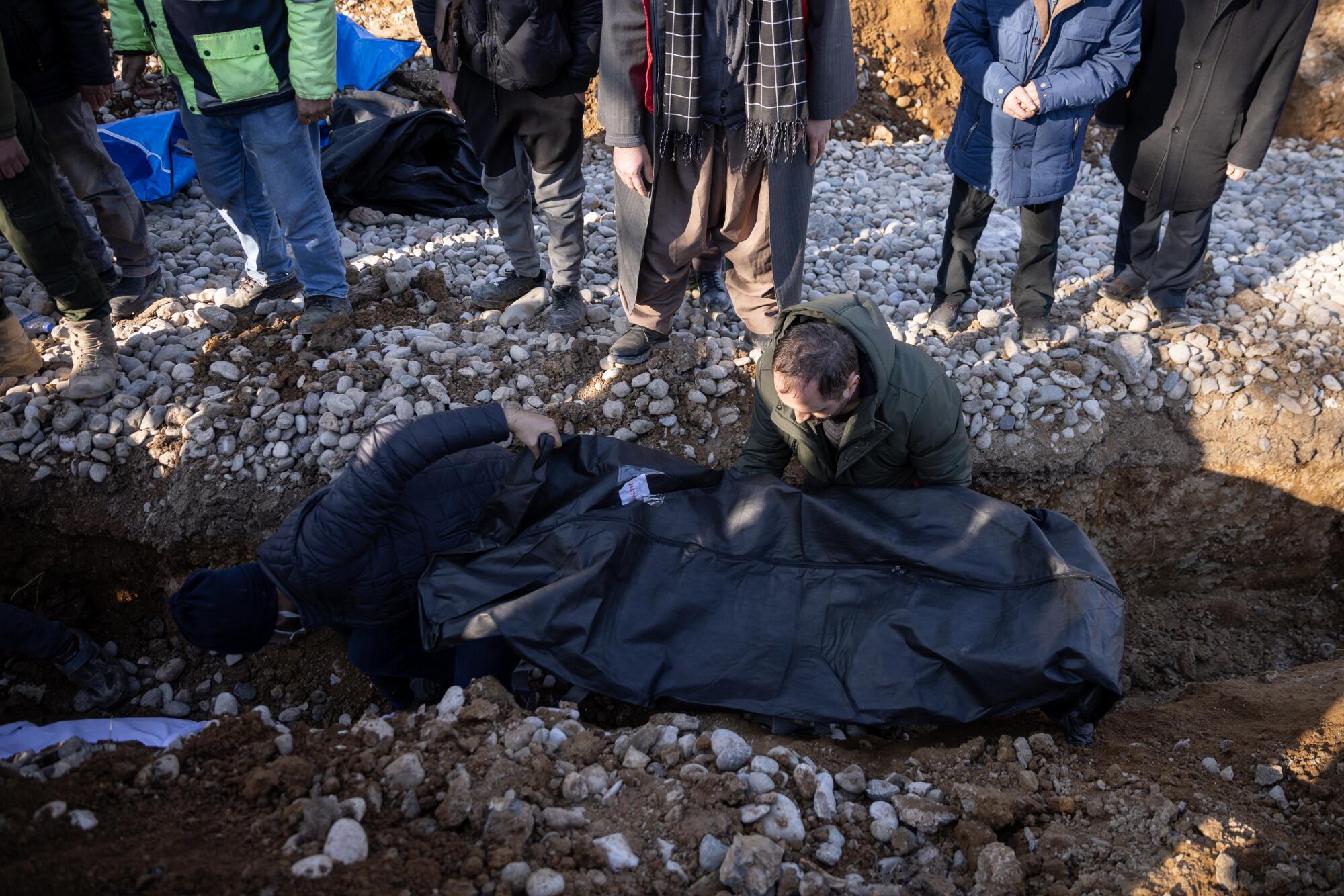
And that was that, other than the smell of earth, fresh-cut wood and rotting flesh.
“We’ve buried four of our relatives today,” said Mohammad Abu Khaled, a 42-year-old tailor from Syria who has lived in Turkey for many years. The dead were all from one family. The total apparent toll in the family includes a grandfather, grandmother, their son, his wife and their three children.
“The children were sleeping in the same room as their grandparents. They were all curled up together when we found them,” he said. “We barely got them out three hours ago. We’ve been trying since Monday.”
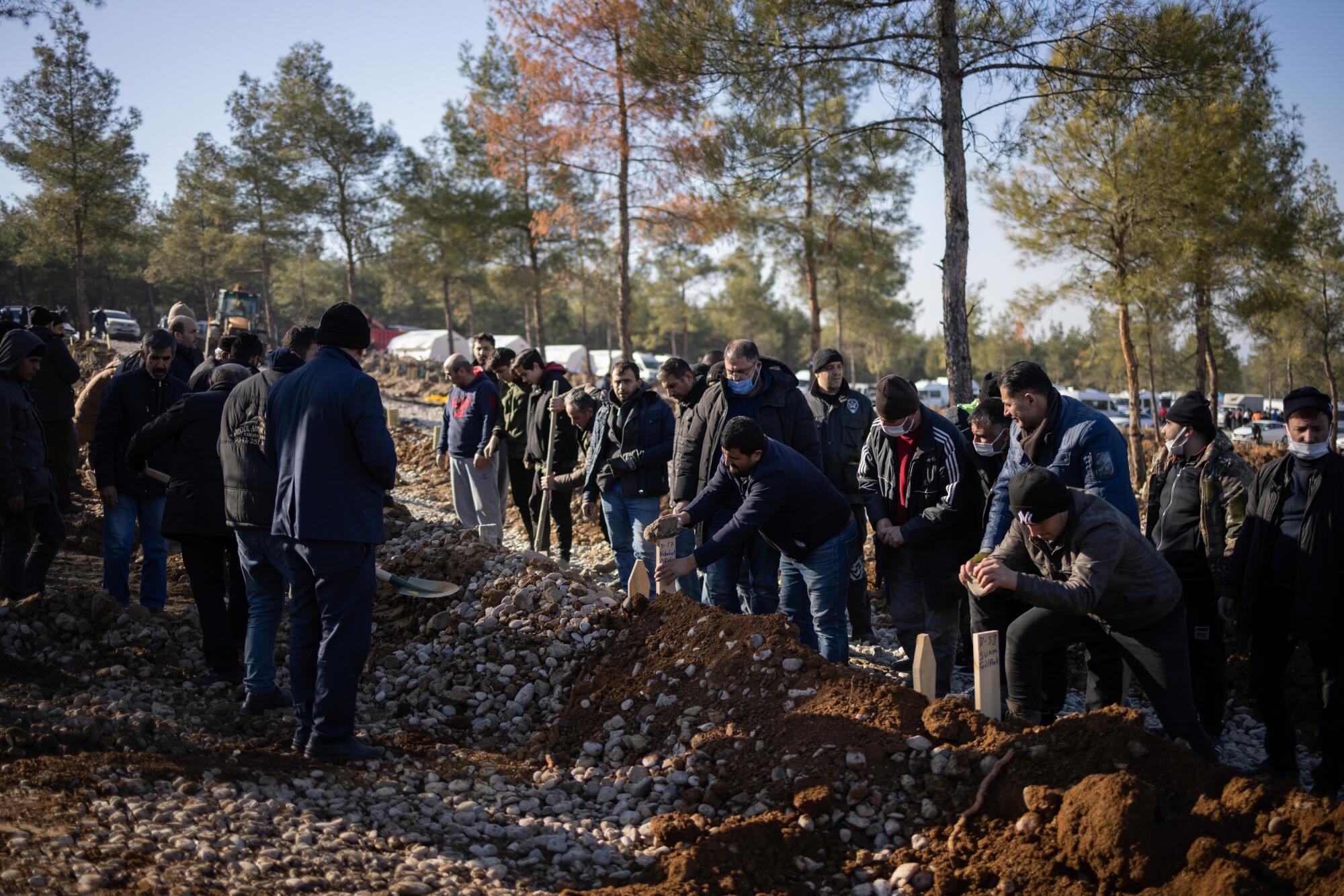
The body of one child, a 7-year-old boy, was wedged too tightly into the rubble to be removed. His parents were still missing too; Abu Khaled doubted they survived, but “was hoping for a miracle.”
And still the corpses kept coming.
Kahramanmaras was once an elegant city, nestled at the foot of Mt. Ahir and famous for its version of dondurma, Turkish ice cream.
Now most of its buildings are in ruins. In many, the floors collapsed into one another like smashed-up layer cake; others simply crumbled into incoherent hills of rubble.
Almost every corner is replete with disaster crews manning bulldozers and using jackhammers to cut through the concrete.
At the remains of one building, a rescue worker squeezed into a foot-high opening between two floors to take out a body.
A woman nearby — one of the building’s residents — shouted that her son remained buried but was still alive. A policeman to the side muttered that that was impossible and gave a small shake of his head as he looked at his colleague.
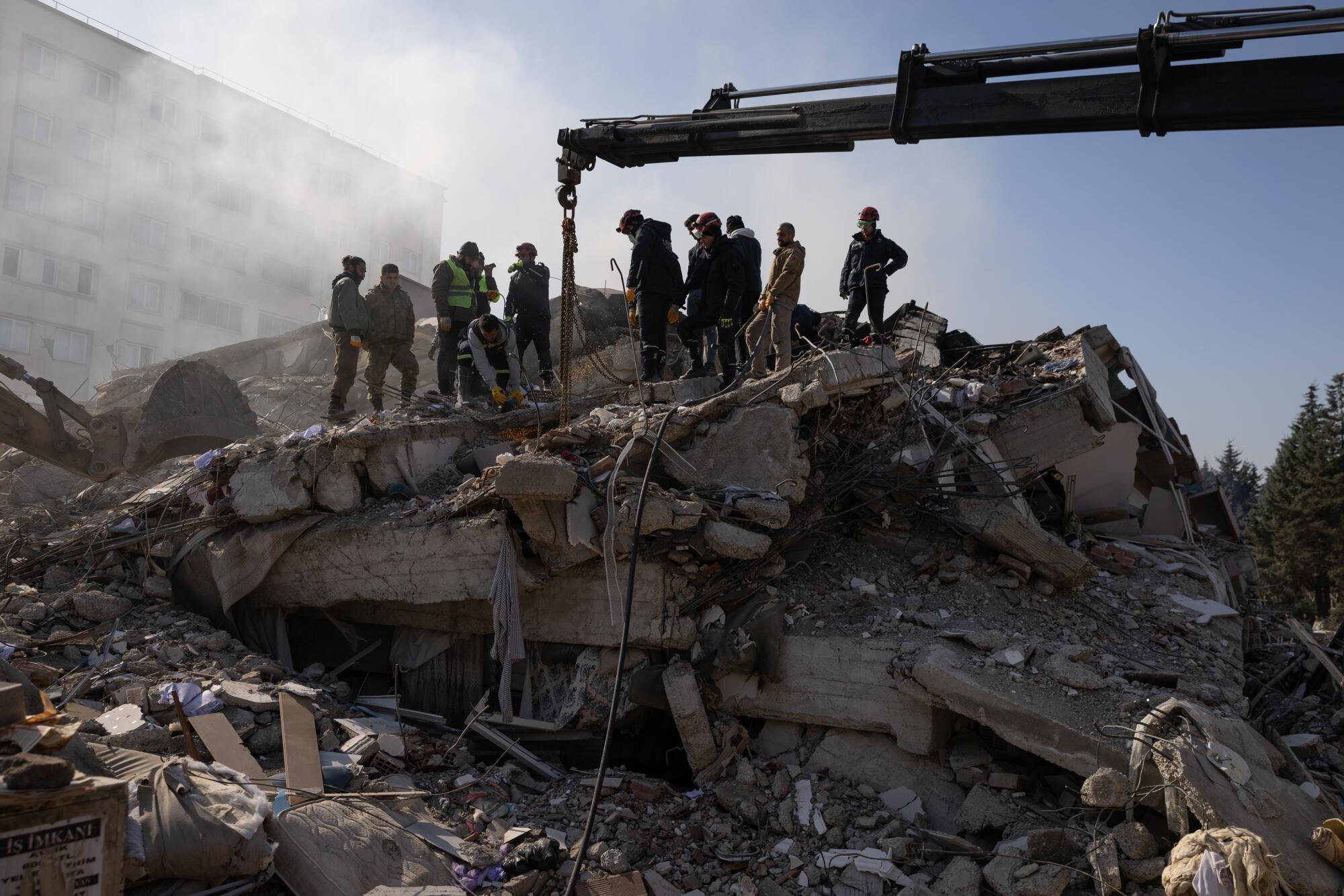
All day long, hearses with green sirens ferried the latest victims that were removed from the rubble. They brought the corpses to the cemetery’s edge, where authorities had prepared a sort of reception point.
Police officers in white coveralls took out the body bags, placed them on the ground, then unzipped them to expose a glimpse of bruised, detritus-scarred skin before snapping a photo for documentation.
On one side were the unidentified or unclaimed, where survivors — their faces grimacing at both the stench and the sight of so many dead — trudged past, seeking to learn the fate of their lost loved ones.
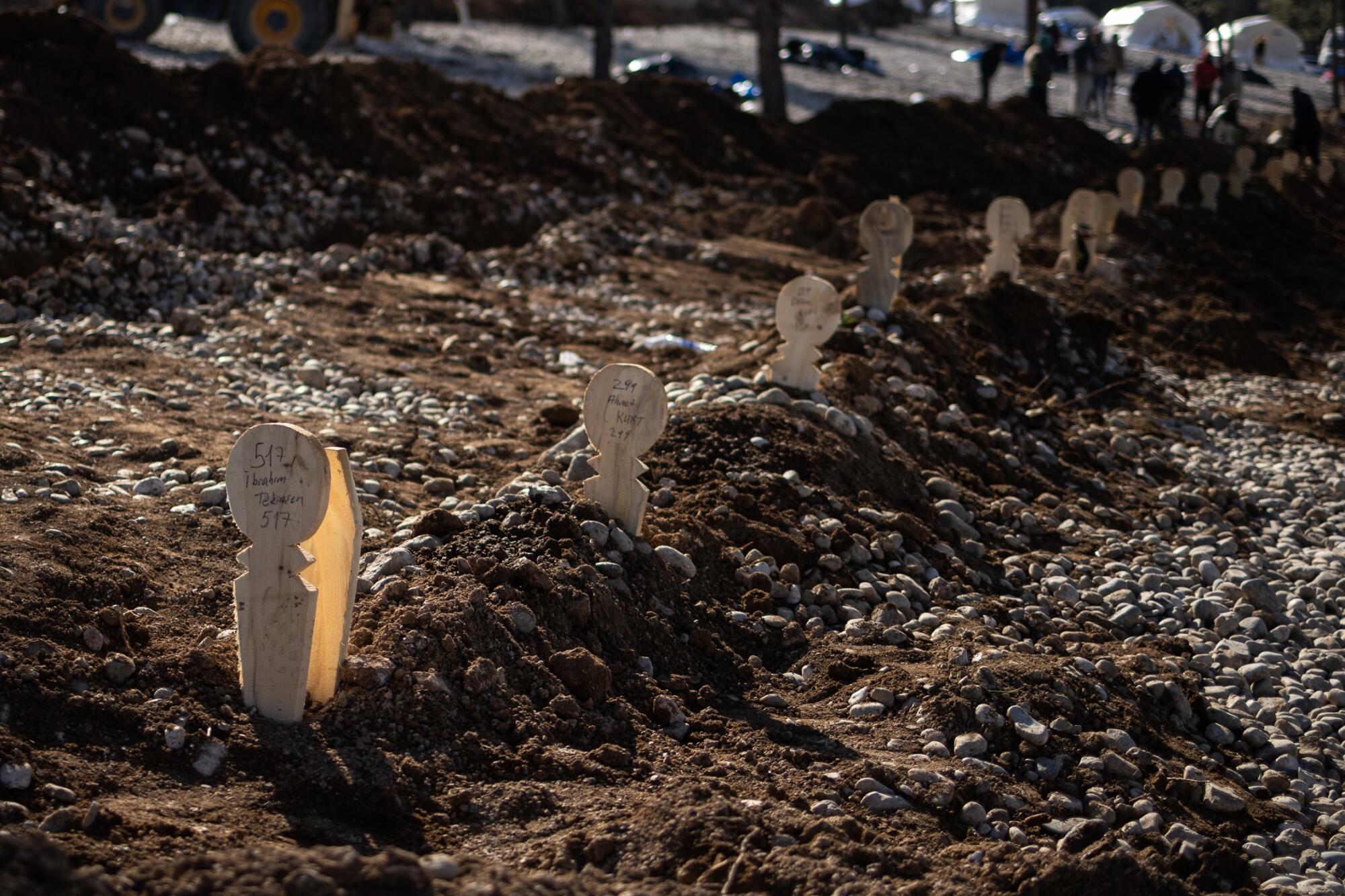
Dotted around the cemetery were aid organizations distributing ready-cooked meals. One offered chicken doner (the Turkish version of shawarma), drawing lines of people not far from a heap of now-empty body bags.
As night fell, the excavators continued making furrows. To the four trenches they had dug in one section of the graveyard they added another quartet, and then another.
They weren’t enough.
At one of the trenches, Abdul Qader Ahmad and his brother Jihad worked together to complete their parents’ graves, hammering a piece of wood into the soft earth with a stone.
Abdul Qader choked out strained, high-pitched sobs that seemed totally at odds with his body builder frame. Jihad too was crying, ignoring family members telling him it was time to go.
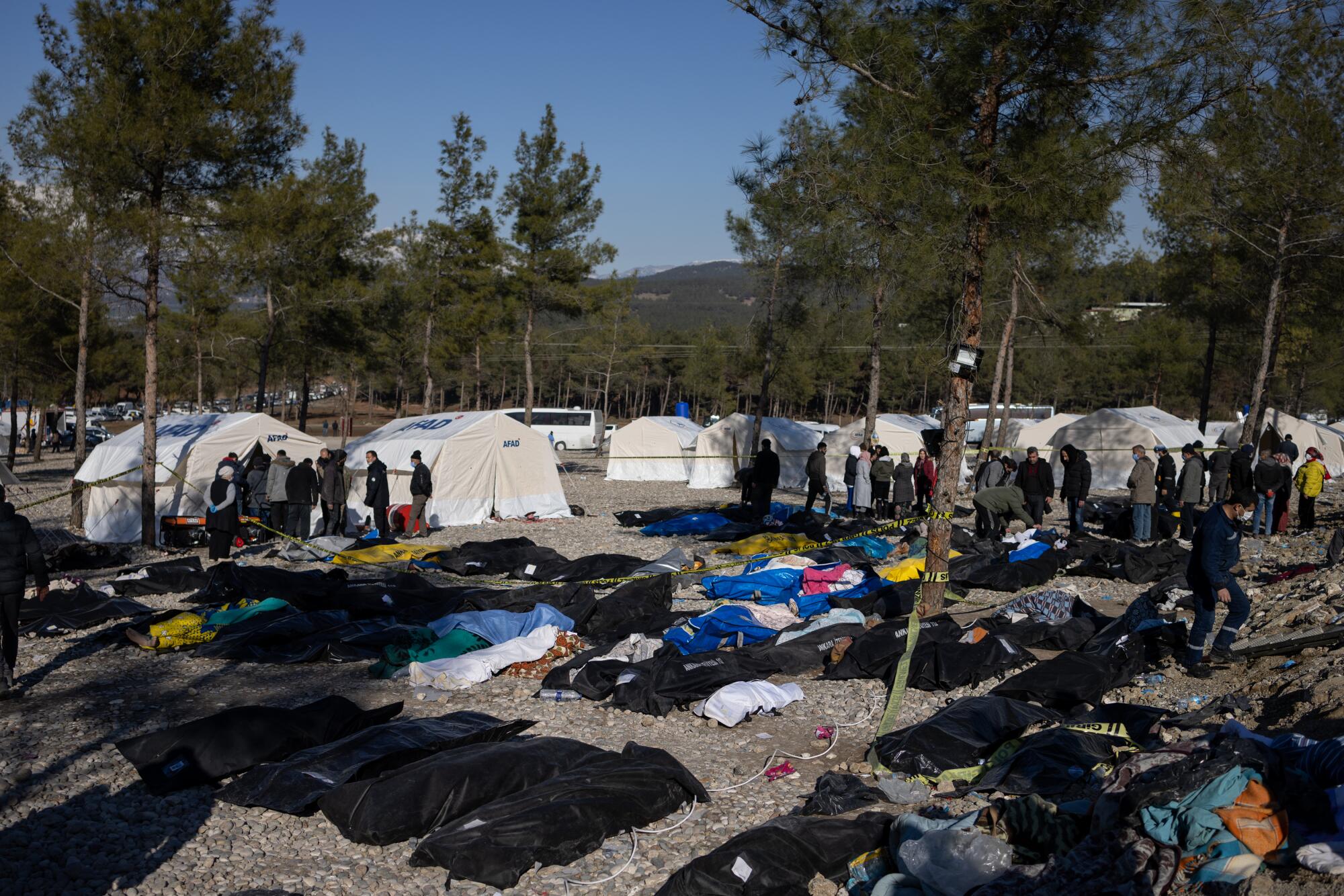
He sat on the grave, hugging the mound of soil with his body. His relatives walked a short distance away, then turned to watch him.
He didn’t move. Instead, he repeated the Koranic verse, “We belong to God and to him we return,” his chest heaving with the sobs.
More to Read
Sign up for Essential California
The most important California stories and recommendations in your inbox every morning.
You may occasionally receive promotional content from the Los Angeles Times.
